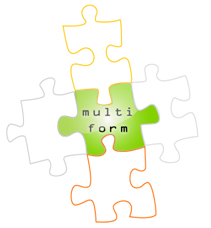Introduction

Control systems are a crucial element in high-tech systems and especially in large industrial and infrastructure systems. Industrial production in Europe is highly automated, not only to reduce labour cost but also to meet stringent constraints on product quality and environmental impact and, most importantly, to guarantee the highest possible level of safety. Modern control systems technology can increase productivity and performance of the controlled system significantly.
Model-based design is up to now common practice in controller design only for one type of the elements of a control system: continuous or quasi-continuous regulatory and setpoint-tracking feedback control algorithms. However, this aspect constitutes only a small part of the control software of a large complex integrated system. It is generally agreed that the design process for such a complex system should follow the so-called V-model that is shown in the figure on the upper right. In a model-based design process, there is a hierarchy of models that represent the design decisions. The design starts with an abstract design of the system that is based on coarse specifications. Subsequently, the designers refine the design and the models of the subsystems and components until a level of detail is reached that faithfully and accurately represents the dynamics of the component under consideration and is thus suitable for controller design. There may be different types of models of each component or subsystem, corresponding to different views of the component or subsystem that are related to different controller design tasks.
The current state of the technology with respect to tool support for the integrated design following this scheme is characterized by islands of support, and integrated tool support is not available up to now. The MULTIFORM project will enhance the tool support of an integrated model-based design process of the physical system, the controllers, and the communication and software infrastructure by addressing the following issues:
Development of a common model-based software framework and support of the design process by the provision of integrated support for the work flow and for the management of models and data on all levels of the design hierarchy.
Development and integration of general interchange formats that enable a transfer of models of components of a complex system between different formalisms, levels of description, and model implementations, e.g. the embedding of a logic controller into a rigorous nonlinear simulation model.
Development and integration of tools for the specification and the design of control functions on all levels of the automated design process and the control hierarchy.
Development of new ways to connect techniques for analysis and design that are based on different levels of abstraction.
Development of new tools and techniques for abstraction and refinement during the design process and for the propagation of information between the design levels.
Application of integrated multi-formalism design and analysis work flows to challenging real-world industrial case studies, such as warehousing systems, chemical processing plants, and systems from the automotive industry.
Objectives
The main objective of MULTIFORM is the integration and the support for interoperability of tools and methods based on different modelling formalisms in order to make a significant step towards integrated coherent tool support for the design of large complex controlled systems from the first concept to the implementation and further on over their entire life cycle.
By addressing the issue of multi-level multi-formalism control systems modelling and design, this project represents a definite advance over the traditional approach pursued by the control community that focuses solely on the design of control algorithms and, to some extent, their interaction with communication protocols. The multi-formalism approach pursued here reflects the heterogeneous nature of the functionality and of the implementation of large and complex controlled systems. The key contribution of the project towards the goal of integrated model-based control systems design is the connection of tools that support the design of different layers of the control hierarchy and on different levels of abstraction. Integration of tools is pursued both along the axes of re-use and consistency of models, and of feedback and feedforward of results between different levels of the design process and is addressed by mature tools that are based on different formalisms.
Partners
- VEMAC GmbH & Co. KG
- KVCA A/S
- Technische Universität Dortmund
- Technische Universiteit Eindhoven
- RWTH Aachen University, Germany
- Aalborg Universitet, Denmark
- Stichting Embedded Systems Institute
VERIMAG People involved
- Goran Frehse


